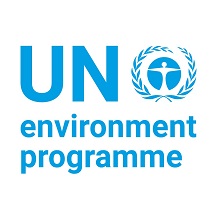Climate Change Adaptation in the Cundinamarca Department of Colombia (TACC)
Project Overview
The Down to Earth: Territorial Approach to Climate Change (TACC) is part of a partnership between the United Nations and sub-national governments for fostering climate friendly development at the sub-national level. This partnership is a collaborative effort involving UNDP, UNEP and eight associations of regions.
In Colombia the TACC project is working in Cundinamarca to support the integration of climate change adaptation and mitigation measures into sustainable development planning and programming. The project aims to support capacity building of national and regional authorities in order to integrate climate change into territorial planning and programming, thereby developing, through a capacity building process, a sub-national Level Low Emissions Climate Change Resilience Development Strategy (LECRDS).
In Colombia, project staff have established the partnership and coordination structures referenced in Step 1: Developing a multi-stakeholder planning process. Now they are working on Step 2: Climate change physical impact and vulnerability scenarios with the preparation of climate scenarios underway. Step 3 will identify strategic options leading to low emission climate-resilient development trajectories, via a case study at the municipal level. The project is currently collaborating in the formulation of the National Climate Change Adaptation Plan, in service of Step 4: Identify Policies and Financing options to implement priority Climate Change Actions. Finally, Step 5 will result in the preparation of a low emission climate resilient development roadmap.
Click here for more information on the Overall TACC Project.
Project Details
The Down to Earth: Territorial Approach to Climate Change (TACC) project aims to assist regional and local governments in developing countries in:
- Developing integrated climate change strategies and action plans to assess development options that are robust enough to withstand different future climatic conditions.
- Strengthening capacity of sub‐national authorities to integrate climate change into sustainable development planning and programming.
- Identifying no regrets/negative costs/low‐cost adaptation and mitigation measures that promote long‐ term sustainability and poverty reduction.
- Enhancing the capacity of regional and local government to enact regulatory measures, as well as to take advantage of new sources of environmental finance, to implement these no regrets/negative cost/low‐cost options.
UNDP provides support to the regional government and several national institutions to develop the Integrated Territorial Climate Plan for the Capital Region of Colombia (Bogota District and the Department of Cundinamarca).
The project aims to support capacity building of national and regional authorities in order to integrate climate change into territorial planning and programming, thereby developing, through a capacity building process, a sub-national Level Low Emissions Climate Change Resilience Development Strategy (LECRDS).
Key Results and Outputs
Main activities to date
Step 1: Develop a multi-stakeholders planning process
Partnership engagement and coordination structure: Project Coordination Unit established and 11 public institutions engaged in the project Steering Committee. 6 technical working groups have been set, relying on the project’s capacity development goal. These groups are: i) Analysis of regional dynamics; ii) Climate change scenarios and analysis of climate variability; iii) GHG inventory; iv) Vulnerability Assessment; v) Territorial planning; vi) Education strategy and knowledge management. About 130 professionals from partner institutions are engaged in these different groups. In this first phase of the process, it was considered crucial to strengthen inter-institutional relations. An advisory committee comprised of multi-stakeholders will be established in March 2012.
Step 2: Prepare Climate Change Profiles and Vulnerability Scenarios.
Climate scenarios downscaled at a sub-national level are being developed, with the assistance of Columbia University/NASA, using the Change Factor Method. Periods: 2030, 2040, 2070, 2100 and gas emissions scenarios: A2, A1B, B1. For February 2012, a climate variability analysis and short-term projections (ENSO phenomenon) will also be available. A particular territorial vulnerability assessment model has been developed and implementation is underway, climate related disaster records are included in the analysis. For the GHG emissions inventory, information on 5 main emitting sectors is being collected, according to the IPCC guidelines (1996, 2006).
Step 3: Identify Strategic Options Leading to Low Emissions Climate –Resilient Development Trajectories.
The construction of the regional climate change education strategy has started. The strategy aims to raise awareness among the public and decision makers about development approaches needed to ensure territorial security on the face of climate change. Key values were identified: identity, responsibility, equity and solidarity. Regarding the integration of climate related risk management in territorial planning instruments, a set of guidelines will be identified and put into practice through a case study at a municipal level.
Step 4: Identify Policies and Financing options to implement priority Climate Change Actions.
A regional dynamics analysis will help better understand the opportunities and challenges to implement strategic mitigation and adaptation options. Efforts have also been focused in positioning the project at a regional and national level, seeking to link the project results and lessons learned with national methodologies and guidelines that are being developed by the authorities. The project is currently collaborating with DNP and MAVDT in the formulation of the National Climate Change Adaptation Plan.
Step 5: Prepare Low Emission Climate Resilient Development Roadmap.
Reports and Publications
Document
Territorial Approach to Climate Change (TACC) 2012 Update
Assessments and Background Documents
Colombia- Second National Communication 2010 English (Executive Summary)
ProDocs
Project Brief / Fact Sheet
Project Brief: Territorial Approach to Climate change in the Capital Region of Colombia
Monitoring and Evaluation
Main activities (as of September 2011)
Step 1: Develop a multi-stakeholders planning process
Partnership engagement and coordination structure: Project Coordination Unit established and 11 public institutions engaged in the project Steering Committee. 6 technical working groups have been set, relying on the project’s capacity development goal. These groups are: i) Analysis of regional dynamics; ii) Climate change scenarios and analysis of climate variability; iii) GHG inventory; iv) Vulnerability Assessment; v) Territorial planning; vi) Education strategy and knowledge management. About 130 professionals from partner institutions are engaged in these different groups. In this first phase of the process, it was considered crucial to strengthen inter-institutional relations. An advisory committee comprised of multi-stakeholders will be established in March 2012.
Step 2: Prepare Climate Change Profiles and Vulnerability Scenarios.
Climate scenarios downscaled at a sub-national level are being developed, with the assistance of Columbia University/NASA, using the Change Factor Method. Periods: 2030, 2040, 2070, 2100 and gas emissions scenarios: A2, A1B, B1. For February 2012, a climate variability analysis and short-term projections (ENSO phenomenon) will also be available. A particular territorial vulnerability assessment model has been developed and implementation is underway, climate related disaster records are included in the analysis. For the GHG emissions inventory, information on 5 main emitting sectors is being collected, according to the IPCC guidelines (1996, 2006).
Step 3: Identify Strategic Options Leading to Low Emissions Climate –Resilient Development Trajectories.
The construction of the regional climate change education strategy has started. The strategy aims to raise awareness among the public and decision makers about development approaches needed to ensure territorial security on the face of climate change. Key values were identified: identity, responsibility, equity and solidarity. Regarding the integration of climate related risk management in territorial planning instruments, a set of guidelines will be identified and put into practice through a case study at a municipal level.
Step 4: Identify Policies and Financing options to implement priority Climate Change Actions.
A regional dynamics analysis will help better understand the opportunities and challenges to implement strategic mitigation and adaptation options. Efforts have also been focused in positioning the project at a regional and national level, seeking to link the project results and lessons learned with national methodologies and guidelines that are being developed by the authorities. The project is currently collaborating with DNP and MAVDT in the formulation of the National Climate Change Adaptation Plan.









